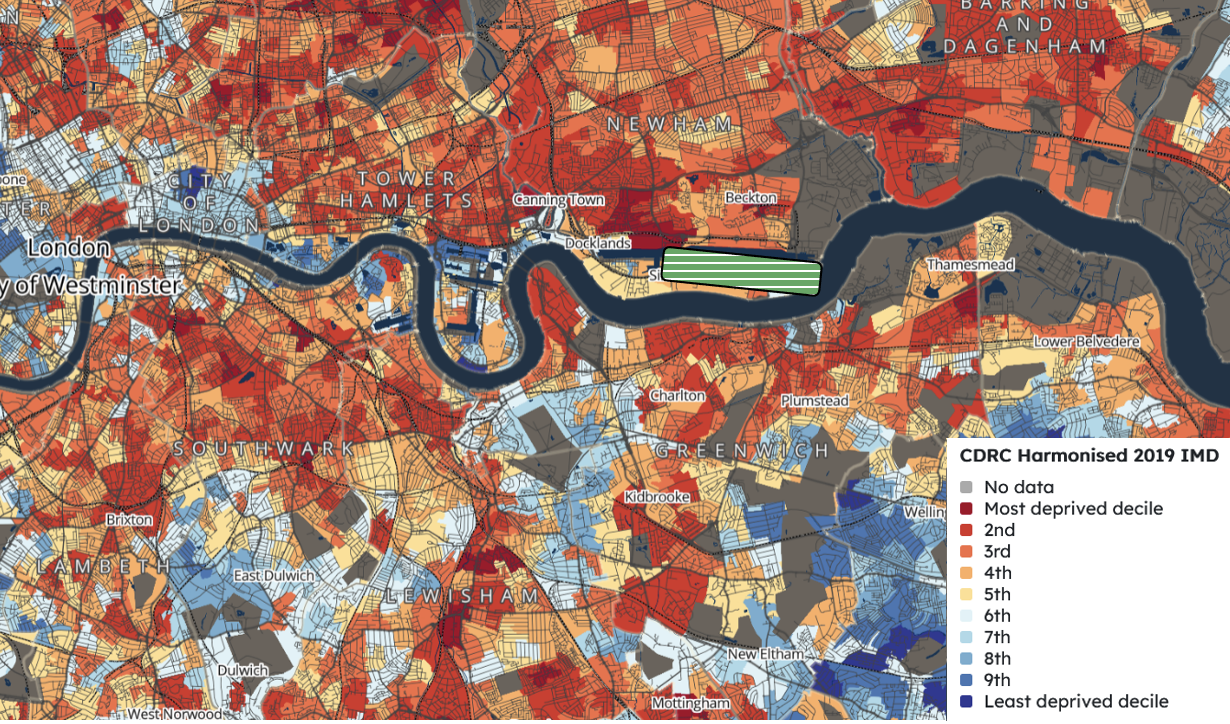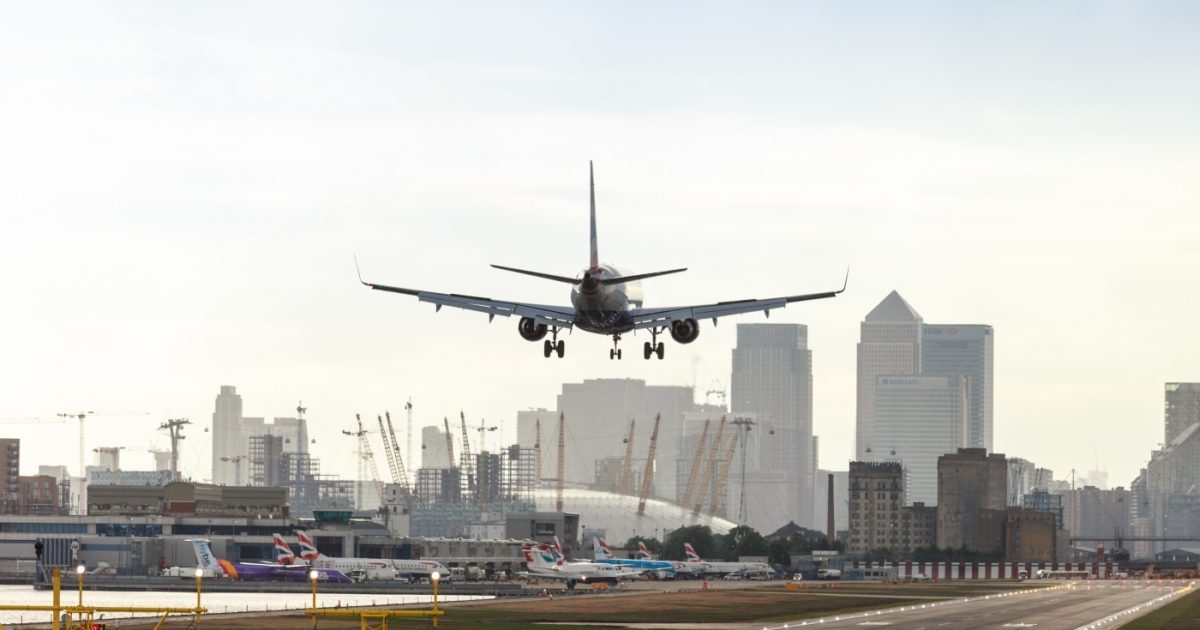Approving expansion would send the wrong message about the new approach to planning
In her first speech as Chancellor Rachel Reeves set out plans for a “growth-focused approach to the planning system” which would see “red tape” cut to “get Britain building again”. Few would dispute that we need to get moving on new homes and infrastructure, but the national renewal the new government seeks will not be achieved by approving just any old development.
One of the first proposals on the table for the new administration is the application from London City airport to significantly increase its flight numbers. The London Borough of Newham rejected the proposal, but the airport has appealed the decision. Now, the final call falls on Angela Rayner, as the new secretary of state for local government, in a first test of the priorities of the new administration. Not only is the proposal unlikely to drive much in the way of economic growth, but it is an abysmal proposition on a whole raft of social equity and environmental grounds. Indeed, the proposal directly contradicts advice from the UK’s Government’s own Climate Change Committee (CCC). The last government had a dangerous disregard for that advice.
As an expert witness at the planning inquiry which heard the airport’s appeal, I have been following this application for a number of years. Now, supported by new analysis of Civil Aviation Authority (CAA) data, I have summarised the key issues with London City airport’s proposed expansion.
What is proposed?
London City airport has applied to add an additional 2.5 million passengers per year to its capacity. After the collapse of corporate air travel post-pandemic, the airport is making a play for the leisure travel market. To achieve this, the airport wants the government to remove a current restriction on flights taking-off on Saturday afternoons, and to increase the number of flights departing before 7am on weekdays. The restrictions the airport wants removed were put in place to protect the wellbeing of local residents, specifically to give them respite from the constant noise intrusion.
Who benefits?
New analysis by NEF and Possible of the CAA’s passenger survey exposes precisely who benefits from expansion of London City airport: frequent flyers. In fact, it is the UK’s favoured airport of frequent, and ultra frequent, flyers. In 2019, an estimated 43% of seats were occupied by passengers who fly at least once every two months (i.e. six or more return trips per year). Unsurprisingly, this means that the airport serves wealthier travellers. CAA data suggests the median household income of leisure passengers at London City airport is typically around 34% higher than the average UK air passenger.
The climate cost
The CCC’s objections to airport expansion are understandable. This project is estimated to add around 230,000 tonnes of carbon-equivalent emissions to the atmosphere annually up to 2050.[i] This is roughly the same as adding 165,000 cars to our streets every year. But precisely how wasteful these emissions are is exposed in the detail.
London City airport is a short-haul airport. New NEF analysis shows that in 2019, 33% of passengers flying from the airport were travelling on routes that can be completed in only one train. Key destinations are Edinburgh, Amsterdam, Glasgow, and Rotterdam all of which are served by a direct train from London. A further 31% of passengers are travelling to destinations reachable with only one train connection. This includes Frankfurt, Dusseldorf, Geneva, Zurich, and Milan. There are plans for a number of these destinations to be served via a direct train in future.
In total, 64% of passenger journeys from London City airport in 2019 could have been completed in two trains or less. NEF analysis suggests that almost 450,000 tonnes of carbon equivalent emissions were linked to flights departing on these routes. That means a total of 900,000 tonnes of carbon equivalent emissions when we account for the return flights.
Not only does London City airport serve a group of destinations easily reachable by train, but it does so with some of the least efficient planes (on a per passenger basis). During the planning inquiry, the London City airport’s consultants conceded that carbon emissions per passenger were around 60% higher than at other London airports (on the same routes) because of the airport’s smaller aircraft.[ii]
Damaging the local environment
London City airport’s location means that aircraft fly over dense urban areas as they approach and depart the airport, particularly in Newham, Lewisham, Tower Hamlets and Southwark. These areas are among the most deprived communities in the UK, as shown in the government’s Index of Multiple Deprivation (see map below). This creates a noise disturbance for hundreds of thousands of residents. A key objective of the present application is to remove a respite period on Saturday afternoons. When the Borough of Newham first heard the application, hundreds of local residents submitted moving personal objections describing how the loss of respite would impact their mental health and wellbeing.[iii] Understandably so, as approving the proposed application would result in significantly worsened noise disruption for at least 200,000 people — according to analysis from the airport’s own consultants.[iv] But this is likely a significant underestimate. A citizen science study conducted by local residents and reviewed by Dr Christian Nold of the Open University found very significant noise impacts in areas that were not being properly monitored by the airport.[v]
As well as contending with the harmful physical and mental health effects of noise disturbance, residents will also experience worsened air quality. Recent research from Transport and Environment highlights that the health effects of “ultrafine particles” released by airplanes may be having significantly worse health impacts than previously thought.
Map 1: Deprivation in the vicinity of London City airport
Index of multiple deprivation showing local areas from most deprived (red) to least deprived (navy blue) in the vicinity of London City Airport (green lined box)

Source: Consumer Data Research Centre, 2024
The economic impact
In the past, London City airport’s primary purpose was to serve corporate travellers but, as NEF analysis has recently shown, business use of air travel has collapsed since the pandemic and numbers are well below their historic peak in the year 2006. Now the airport is trying to make a move into the leisure travel market.
The trouble is, increasing leisure travel is not particularly useful when it comes to the economy. NEF’s review of academic research last year suggested it’s only growth in air passengers travelling for business which drives up orthodox economic indicators like GDP. This is because while there’s a benefit from incoming holidaymakers, this benefit is more than offset by the spending losses of outgoing tourists. Our analysis shows that at London City airport in 2022, for every two tourists that came into London through the airport, three departed. While some of this spending can come back, via routes like foreign direct investment (FDI) is doesn’t go back to the communities it left from. Instead, it can be used to transfer UK companies, debt, and property into foreign ownership.
While more flights at potentially lower prices do make flying more accessible for lower income households, most new seats added through airport expansions are taken by higher income frequent flyers. These groups, endowed with disposable income, respond to the price signals presented to them (signals which are also increased by the absence of fair taxation of air travel’s environmental impacts). As we’ve already got very cheap flights, and capacity for some 300 million passenger movements every year, the social benefit of adding even more is tiny in comparison to the threat posed by the climate crisis. The climate, and communities like those living around the airport in east London, have been failed miserably for decades, they must not become victims of a misdirected dash for growth.
Notes
[i] A multiplier of 3.0 is applied to carbon dioxide emissions to account for the latest scientific estimate of the impact of non-carbon emissions impacts on the climate.
[ii]York Aviation (2024) Louise Congdon Inquiry Note on Carbon and Noise costs. Document Reference: INQ-29. London City Airport Planning Appeal, Appeal Reference: APP/G5750/W/23/3326646
[iii] See application 22/03045/VAR on the Newham planning portal
[iv] See proof of evidence of Richard Greer at the London City Airport appeal proceedings
[v] Nold, C. (2024) Proof of Evidence of Dr Christian Nold. Document Reference: HACAN‑3.1. London City Airport Planning Appeal, Appeal Reference: APP/G5750/W/23/3326646
Passengers, and proportion of passengers at London City Airport on routes doable in under 5, 6 and 8 hours spent on trains.
|
Total time on train(s)* |
Passenger numbers (2023) |
Share of total passenger load at City airport |
|
Under 5h |
1,502,000 |
43.7% |
|
Under 6h |
1,857,000 |
54.1% |
|
Under 8h |
2,274,000 |
66.2% |
*not including transfer times
|
Destination |
Passengers |
Changes |
Share of total airport passengers |
Total time on train(s)* |
|
ROTTERDAM |
136,175 |
1 |
4.0% |
3h 30m |
|
AMSTERDAM |
518,191 |
1 |
15.1% |
4h |
|
EDINBURGH |
342,810 |
1 |
10.0% |
4h 20m |
|
GLASGOW |
208,629 |
1 |
6.1% |
4h 30m |
|
LUXEMBOURG |
167,997 |
2 |
4.9% |
4h 30m |
|
DUSSELDORF |
128,443 |
2 |
3.7% |
4h 50m |
|
FRANKFURT |
250,450 |
2 |
7.3% |
5h 45m |
|
GENEVA |
104,732 |
2 |
3.0% |
5h 30m |
|
NICE |
61,539 |
2 |
1.8% |
7h 50m |
|
ZURICH |
355,071 |
2 |
10.3% |
7h 40m |
|
MILAN |
100,673 |
2 |
2.9% |
8h 40m |
*not including transfer times
Image: iStock


